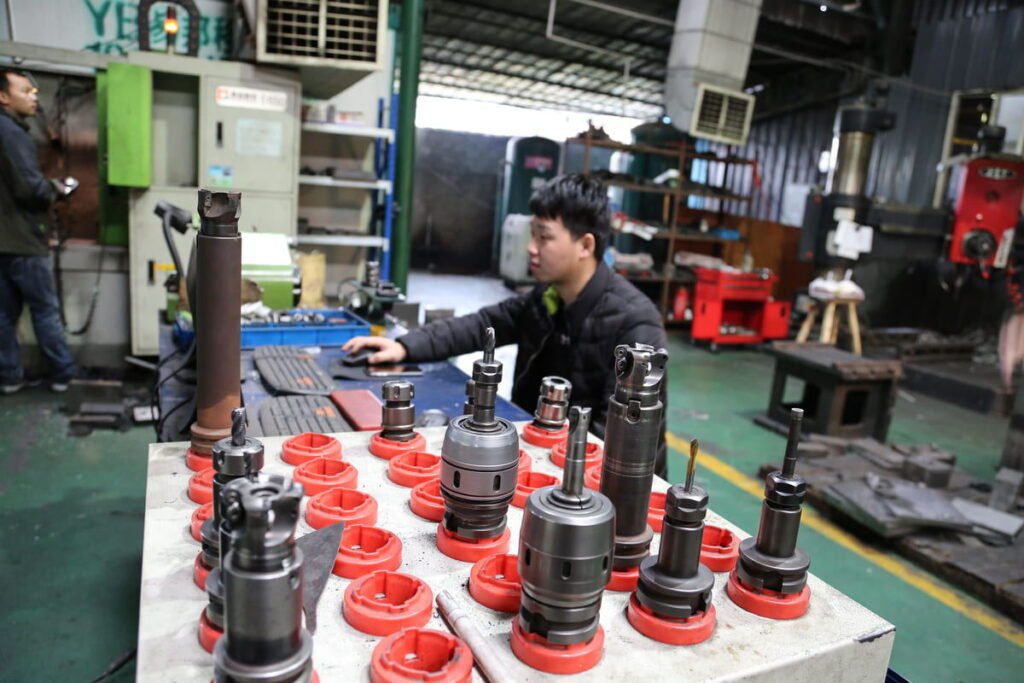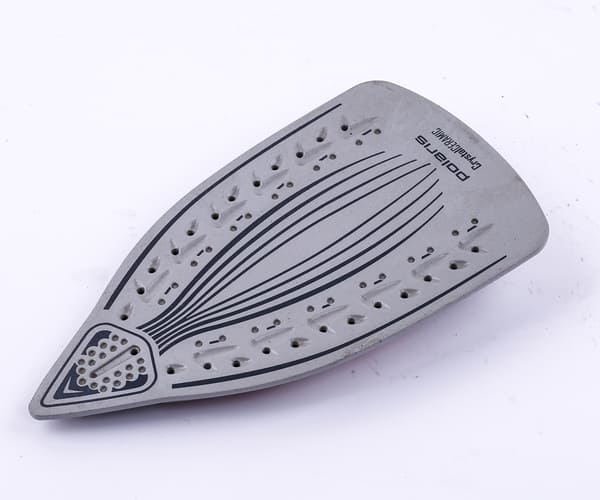There are various methods of casting. These include gravity die casting, centrifugal casting, vacuum die casting, sand casting, investment casting, low-pressure casting, squeezing die casting, etc.
However, in this article, we will consider gravity die casting. We will take a look into the meaning, production processes, advantages and disadvantages of gravity die casting.
Okay so, let’s dive in.
Meaning of gravity die casting?
This is a permanent mold casting process. It involves pouring molten metal from a crucible into a mold under the force of gravity. You can use this die for different metals. These include aluminium, copper, zinc, magnesium, cast iron, steel, etc.
Production processes of gravity die casting
The production processes of gravity die casting is similar to that of pressure die casting. The difference between them is in the manner of applying molten metal into the mold. Gravity die casting does not involve pressure or any other force. It only uses gravitation.
The production processes involve:
• Preparation of mold:
This is the first gravity die casting process. The mold contains the mold cavity. Its design determines the dimensions and contours of the casting. It affects the configuration, shape, uniformity and quality of the castings.

To make a mold, use a material with higher strength and melting temperature than the material you want to cast. If not, the die can get damaged during the casting process.
To design the mold, you can use the 3D CAD/CAM systems. Computer-aided simulation calculation will help you make the mold optimally adapted to the die-cast parts.
The mold should have two halves so that you can open and close it. This is also to ensure that the castings can be removed from the mold easily.

The parting line separates the two halves. Ensure you place the parting line at the proper place. Otherwise, the production materials may seep down the gap between the mold pieces, thereby causing irregular molding and excess seaming.
You can also add the fillets to almost anywhere on the mold. Though except in the parting line. You can use the fillet to smooth and angled surface to avoid any hindrance in the casting process.
The mold size should be large enough to accommodate gates and risers that require a head of 75-200m.
Note that you can make gravity die casting molds from cast iron. Because the production process has a lower cycling rate, there is no build-up of heat in the mold

Ensure the die is not too strong. Otherwise, this may result in warping due to heat difference between the inner and the outer surfaces. If the mold is too strong, clamping mechanisms will be unable to prevent thermal warping.
Spray the die with a refractory coating. This will help control the temperature of the die during production. It will also help for seamless removal of the casting.
• Making the gating system
The gating system is the channel through which the molten metal flows to the die cavity. It allows seamless flow of molten metal from the ladle to the mold cavity.
Carefully design the gating system as this affects the metal turbulence and yield. The design of the feeders, risers and gating system significantly affects the quality of the die-cast products

The various types of gating systems include horizontal, vertical, top gating, middle gating and bottom gating systems. The gating system contains the sprue, runner, sprue well, the pouring basin and the ingate.
• Lubrication of the internal surface
Die casting systems needs lubrication. This is because of the thermal stress they experience when exposed to molten metals at high temperature
So, you need to apply lubricants to the mold surface. This will increase the film formation and wetting on the mold surface. It will prevent the molten metals from sticking to the molds.

Lubrication helps reduce wetting and spreading time during die casting. Also, it will reduce the cooling time of the die surface.
When lubricating, avoid using insufficient or excess lubricant. Excess lubrication can cause failure of evaporation, porosity and bad surface finishing of the die castings.
Insufficient lubrication can make the heated metals stick to the mold. Also, carefully apply the lubricant such that there is no stain on the die castings.

• Pouring the molten metal into the chamber
The main difference between gravity die casting and pressure die casting is the way of applying the molten metal into the mold. In gravity die casting, you have to pour the molten metal into the mold from above using a ladle or vessel. The molten metal fills from the bottom up, only under gravitational force. No other force is used.
You will pour the molten metal into the runners with minimum turbulence. This is to reduce oxidation, foaming, porosity and inclusions. Sometimes, you may have to tilt the die to control the pouring.

The runners will then convey the metal to different parts of the cavity and allow it to properly fill the voids. The molten metal enters the mold at a slow pace.
The exact time the molds will be filled depends on certain factors. These factors include the geometry of the die-cast parts, the thermal conductivity of the material and the mold, the filed rate of the alloy and the gate area.
Gravity casting depends on gravity to fill the mold. So, the production process may not be faster like some other casting methods such as pressure die casting.

You can use both metal and sand cores to create internal voids. Using sand cores, you can incorporate cavities and undercuts into the die castings.
Note that there are two types of gravity die casting machines. These are the automatic and manual machines. For small-scale castings, you can use the manual machine. You will pour the molten metal by hand. However, for large-scale castings, you can use the automatic machine to pour molten metal into the mold.
• Solidification
Before ejecting the die cast from the mold, ensure the cavity is solid. If the raw material is still in liquid form, you need to let it cool off before ejecting it. Be sure there is a uniform thickness of the die.

• Removal of the casting
After solidification, you can now remove the die casts from the machine. Thereafter, you need to apply the lubricant again on the internal surface before clamping the die together.
• Trimming
As the casting is cooling off, you should remove excess scrap metal. Cut off sharp edges and excess materials to make the product suit your specification.
• CNC machining
This is to give the die castings smoother surface.
• Finishing
The various surface treatment options you can use include: powder coating, chemical film, anodizing, etc.
You can apply powder coating as a dry powder and then heat it. It gives flexible, high-quality finishes. The two types of powder coating are thermoset and thermoplastics.
Chemical Film is a chemical conversion coating in which chromate is applied to the metal. You can apply it by dipping, spraying, or brushing it. You can use it to passivate aluminium the metal you use.
Advantages of gravity die casting
• It produces dense, high-quality castings with excellent mechanical features, such as stiffness and strength. Gravity die-cast parts are suitable for automotive applications such as suspension components.
• Gravity die castings have excellent mechanical properties suitable for heat treatment. This is because of the rapid solidification during production
• Gravity die-cast parts have better surface finishing than most other castings. They also have fine grain sizes.

• Gravity die-cast parts have better density than sand casting.
• It is suitable for both small-scale and large-scale die castings.
• Compared to pressure die casting, it has a lower tooling cost. It does not require highly expensive machines.
• Gravity die castings are heat treatable castings. This is because it has non-turbulent filling
Disadvantages of gravity die casting
• It is not suitable for casting metals with high melting points.
• It is a slower method of die casting. Manual gravity die casting takes more time than the pressure die casting.
• It is difficult to manufacture complex parts with gravity die casting.
• Its tooling costs are higher than that of sand casting.

Various industries make use of gravity die-cast parts. For example, the medical, automobile, electronics, electrical industries, among others. In the electrical industry, gravity die castings are used to produce base materials, LED light housings, and other lighting parts.
In the automobile industry, gravity die-cast parts are used to manufacture cylinder heads, engine pistons, brake callipers,disc-brake parts, hydraulic components, etc.
Conclusion
In this article, we have taken you through the meaning, production processes, advantages and disadvantages of gravity die casting. This knowledge will help you when die casting or sourcing for gravity die-cast products.








